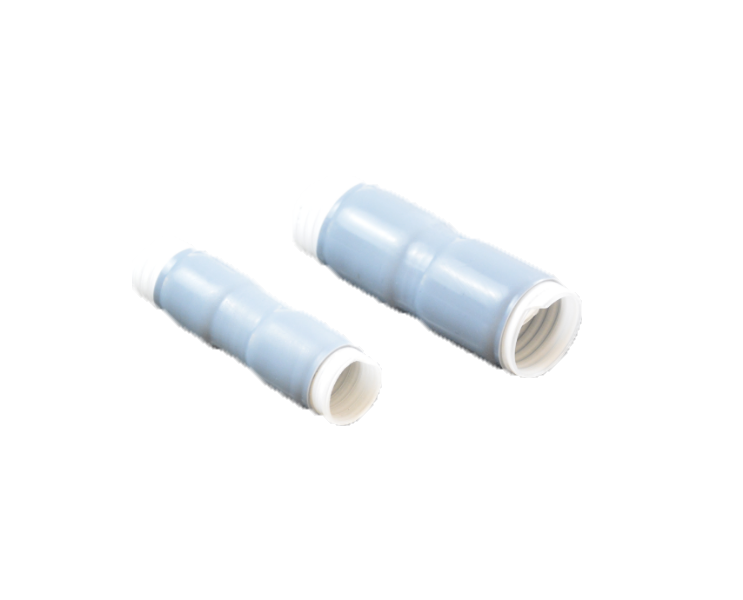What are the advantages of using EPDM insulation in cold shrink tubing compared to other materials?
EPDM insulation, commonly known as Ethylene Propylene Diene Monomer, is a versatile synthetic rubber widely used in various industries for its exceptional electrical and thermal properties. When incorporated into cold shrink tubing, EPDM brings several advantages that set it apart from other materials.
EPDM insulation is particularly suitable for cold shrink tubing due to its remarkable elasticity and resistance to temperature extremes. This property allows cold shrink tubes with EPDM insulation to be easily stretched and applied over various cable sizes and shapes. Once positioned, the tubing contracts or "shrinks" back to its original state, creating a snug and reliable fit around the cable and providing excellent environmental sealing. This ease of installation makes EPDM-insulated cold shrink tubes highly convenient for both indoor and outdoor applications.
Furthermore, EPDM's inherent electrical insulation properties make it an ideal choice for cables and connectors. It effectively prevents electrical leakage and enhances overall cable performance, maintaining signal integrity and reducing the risk of short circuits. EPDM's resistance to moisture, UV radiation, and harsh weather conditions ensures the longevity of the cold shrink tubing, making it suitable for a wide range of environments.
In comparison to other materials, such as traditional heat-shrink tubes or even silicone-based options, EPDM insulation in cold shrink tubing stands out for its combination of flexibility, durability, and electrical insulation capabilities. This makes EPDM-insulated cold shrink tubes a preferred solution in telecommunications, power distribution, and various industrial applications.
Could you explain the application areas where rubber silicone cold shrink tubing is commonly used and why it's preferred in those scenarios?
Rubber silicone cold shrink tubing is a specialized form of cable protection that offers unique advantages in specific application areas. This type of tubing combines the benefits of silicone rubber with the convenience of cold shrink technology, resulting in a versatile and reliable solution.
One prominent application area for rubber silicone cold shrink tubing is in the telecommunications industry. Telecommunication cables often require insulation and protection against environmental factors. The rubber silicone material used in cold shrink tubing provides excellent resistance to moisture, chemicals, and UV radiation. This makes it well-suited for outdoor installations where cables are exposed to varying weather conditions.
Moreover, rubber silicone cold shrink tubing maintains its flexibility and integrity over a wide temperature range. This flexibility allows it to accommodate cable movement without compromising its sealing and insulating properties. The cold shrink design simplifies installation, as no additional heat source is required, reducing the risk of cable damage that can occur with traditional heat-shrink methods.
In scenarios where space is limited, rubber silicone cold shrink tubing's compact design is advantageous. It can be used in confined spaces without sacrificing its sealing effectiveness. This is particularly valuable in industrial settings where cables may be routed through tight spaces or cable trays.
By combining the resilience of silicone rubber with the convenience of cold shrink technology, rubber silicone cold shrink tubing becomes an optimal choice for telecommunication, oil and gas, and transportation industries, ensuring reliable cable protection and longevity in challenging environments.
How does the inclusion of mastic in cold shrink tubes enhance their performance and durability, especially in challenging environmental conditions?
The integration of mastic, a viscous adhesive material, into cold shrink tubing introduces a new level of performance and durability, especially in demanding conditions. Cold shrink tubes with mastic leverage the advantages of both technologies to provide superior sealing and protection.
Mastic serves as a supplemental barrier within the cold shrink tube. When the cold shrink tubing is applied, the mastic layer is in direct contact with the cable and connector surfaces. As the tubing contracts to its original size, the mastic forms a tight, conformal seal around irregular shapes and contours, creating an effective barrier against moisture, dust, and other environmental elements. This dual-layer protection significantly reduces the risk of cable corrosion, maintaining the cable's integrity and longevity.
In environments where cables are exposed to extreme temperatures or frequent temperature fluctuations, the mastic's thermal stability plays a crucial role. It remains pliable and adhesive even in high-temperature conditions, ensuring a continuous seal that prevents water ingress and minimizes the chances of insulation degradation.
Cold shrink tube with mastic finds extensive use in scenarios where reliability is paramount, such as power distribution, utility installations, and telecommunications infrastructure. The combination of mastic's adhesive properties and cold shrink's convenient installation offers a robust solution that withstands the challenges of outdoor and industrial environments.
In conclusion, the incorporation of mastic into cold shrink tubing enhances its protective capabilities, making it an indispensable asset for maintaining the integrity and performance of cables and connectors across a wide range of demanding applications.
